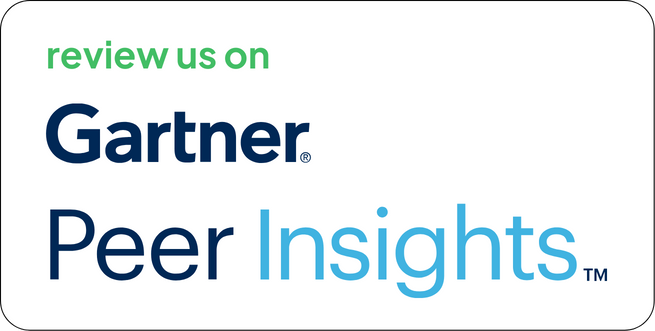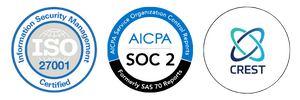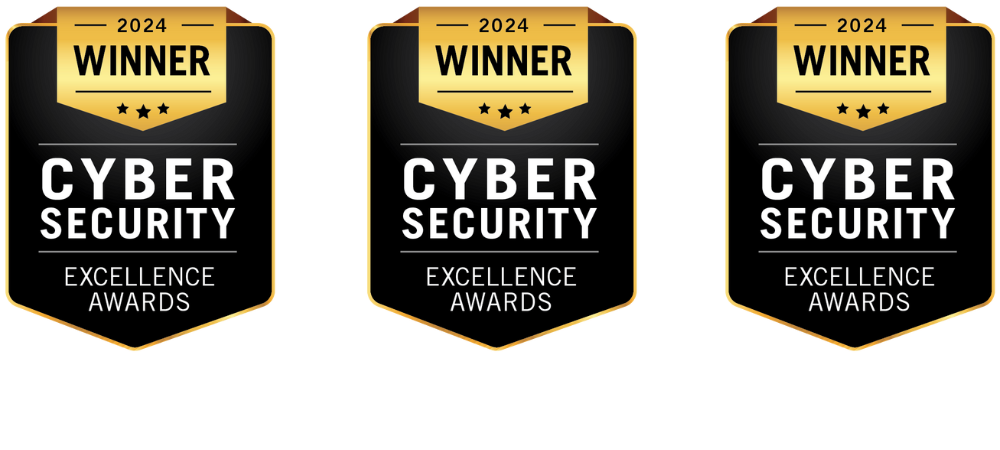CTEM for SaaS is a force to be reckoned with. It’s adaptable, scalable, and user-centric. From customer relationship management to field service automation, SaaS is making businesses more efficient worldwide. But under the hood, there’s a real cybersecurity issue—IT data breaches have exploded, with the average cost now reaching $4.88 million.
As someone who’s worked in SaaS cybersecurity for years, I’ve seen how vulnerable cloud setups, third-party integrations, and identity management can bring down even the best SaaS platforms.
That’s where Strobes CTEM comes in. It’s designed specifically for SaaS, providing a smart, proactive way to secure the things that are most exposed to threats. It’s more than just a tool, it’s a whole new way of thinking about security.
In this blog, I’ll dive into the challenges SaaS companies face, explain how Strobes CTEM is tackling them, and share why it’s so important for the future of SaaS security.
The SaaS Security Struggle: Why It’s So Hard
SaaS is built to be fast and scalable on the cloud, it can grow and change in a heartbeat. But all that flexibility creates more room for problems. Cybercriminals are targeting the very features that make SaaS so powerful. Some stats that should make you think twice:
- 80% of SaaS breaches are caused by misconfigured cloud security setups. A little mistake like leaving a database exposed or neglecting an API security setting can lead to huge problems.
- 63% of SaaS businesses struggle with risks from third-party API integrations (Ponemon Institute, 2023). Every vendor connection can become a potential entry point for hackers.
- As per Gartner, Downtime can cost SaaS companies $300,000 per hour. For SaaS providers, uptime is everything.
The problem is that traditional security tools aren’t built for SaaS. Firewalls and audits are no match for the constant change and growth in API-driven environments. Attacks are getting smarter too. Hackers are using AI to automate phishing, targeting vulnerabilities, and exploiting supply chains. At the same time, compliance laws like GDPR, SOC 2, and CCPA are tightening the screws.
The Biggest Threats SaaS Companies Face
Let’s break down some of the most pressing security risks for SaaS and why they’re so tough to tackle:
1. Cloud Misconfigurations: The Silent Killer
A single misconfigured S3 bucket or a careless IAM role can expose sensitive customer data in seconds. I’ve seen companies lose millions because of simple mistakes, like a junior developer leaving a database open to the public. The scariest part? These issues often go unnoticed until it’s too late.
2. Third-Party Risks: The Trust Trap
SaaS platforms rely on APIs to integrate with payment gateways, analytics tools, CRMs, and more. Each integration is a potential weak link. Take the 2024 breach of a popular SaaS analytics provider, it spread to multiple clients through an unsecured API. When it comes to compliance, auditors don’t care about who’s at fault, they just care that you’ve mitigated the risk.
3. Identity Attacks: The Human Factor
Weak multi-factor authentication (MFA) and poor session management are an open door for attackers. Credential stuffing is a common tactic, using leaked credentials from other breaches to attack SaaS accounts. I remember a case where a startup lost 20% of its users after a session hijacking exposed private data. In SaaS, identity is the front line of defense.
4. Downtime: The Revenue Killer
DDoS attacks and ransomware aren’t just an inconvenience, they can destroy a SaaS provider. A mid-sized company I worked with once had a 12-hour outage from a ransomware attack, which cost them $2 million and damaged their reputation. Data integrity issues, like unauthorized changes to customer records, make things worse.
These threats aren’t slowing down. In fact, they’re only getting worse. With the rise of generative AI and the potential of quantum computing, the risks are growing, and SaaS companies need a security solution that can keep up.
How Strobes CTEM Is Changing SaaS Security
Strobes CTEM for SaaS isn’t your typical cybersecurity tool. It’s a continuous, intelligent system that’s built to match the speed and complexity of SaaS. By combining real-time monitoring, threat intelligence, and automated fixes, it’s designed to tackle SaaS security challenges head-on. Here’s how it works:
1. Asset Discovery: Seeing the Hidden Threats
SaaS environments are constantly changing. New APIs, cloud instances, and subdomains pop up every day. Strobes CTEM continuously scans and identifies exposed assets, even those hidden by shadow IT. Imagine spotting a forgotten test server leaking data before hackers do. That’s the power of real-time visibility.
2. Smart Prioritization: Cutting Through the Clutter
Security teams are overwhelmed with alerts. The key is vulnerability prioritization. Strobes CTEM for SaaS uses threat intelligence from sources like bug bounties and public feeds to score risks based on their potential impact. It flags things like misconfigured OAuth flows or exposed admin panels that other tools might miss. This isn’t just a quick fix, it’s a strategic approach.
3. Penetration Testing: Thinking Like a Hacker
Strobes CTEM for SaaS simulates real-world attacks, like API abuse and privilege escalation, to find vulnerabilities that static scans miss. It also performs tests for compliance with standards like SOC 2 and GDPR. I’ve seen how this approach has saved companies from major breaches, sometimes, it’s the difference between millions lost and keeping things secure.
Solution: Pentesting as a Service
4. Automation: Speed and Scale
In SaaS, manual fixes aren’t enough. Strobes CTEM integrates with your DevSecOps pipeline, pushing prioritized fixes directly into your workflow. It even suggests least-privilege policies to reduce your attack surface without disrupting your operations. Automation here isn’t just about saving time, it’s about survival.
5. Continuous Monitoring: Always On Guard
Threats change quickly. Strobes Continuous Threat Exposure Management (CTEM) stays on top of them, providing real-time alerts for vulnerabilities, leaks, or API abuses. It also automates compliance reporting, which makes audits a breeze. For one client, this feature turned a months-long audit into just a couple of weeks of work.
Why CTEM for SaaS Matters Right Now?
The cybersecurity world is shifting from reactive “patch and pray” to proactive exposure management, CTEM is the vanguard. Gartner predicts that by 2026, 70% of enterprises will adopt CTEM platform, driven by cloud complexity and regulatory heat. For SaaS, this isn’t a trend, it’s a necessity. The old playbook, annual pentests, siloed tools, crumbles under the weight of modern threats.
Take the 2023 Okta breach: attackers exploited a misconfigured service account to access dozens of SaaS clients. A CTEM approach could’ve flagged that exposure early. Or consider the rise of “API sprawl”, SaaS firms now average 200+ APIs, per recent studies. Without continuous oversight, that’s a ticking time bomb. Strobes CTEM bridges these gaps, blending human expertise with machine speed.
Real-World Success: KloudGin and Ideabytes
Strobes CTEM isn’t just theory, it works in the real world:
- KloudGin: A leader in field service, KloudGin needed rock-solid security for critical industries. Strobes provided web, mobile, and API assessments, plus AWS config reviews. After implementing CTEM, their incident response time dropped by 40%.
Case Study: How Strobes Improved KloudGin’s Security with Assessment & Penetration Testing - Ideabytes: Specializing in IoT, Ideabytes faced problems with AWS misconfigurations. Strobes pinpointed risks, improved incident tracking, and reduced exposure by 60%. Now, their cloud posture is one of their biggest selling points.
Case Study: How We Secured AWS Cloud Environment of Ideabytes?
These are real wins, proof that CTEM can scale from startups to enterprise-level companies.
The Payoff: What You Get with Strobes CTEM for SaaS
Here’s what Strobes CTEM brings to the table:
- Full Visibility: No asset or API is left behind.
- Breach Prevention: API monitoring and access control to stop leaks in their tracks.
- Efficiency: Context-based fixes and DevSecOps integration save you time.
- Compliance: Automated reports make audits cheaper and easier.
- Cost Savings: Reducing downtime by 60% ($5M+ annually) and cutting manual effort by 50% ($500K+ per year).
The Future of SaaS Security
SaaS is growing fast. So are the threats. AI-powered attacks, quantum risks, and stricter regulations are already here. The question isn’t if you’ll face them, it’s when.
Most security tools? They react after the damage is done. Strobes CTEM is different.
It helps SaaS companies:
- Spot risks before they become breaches
- Cut costs by focusing on real threats, not false alarms
- Stay ahead of new compliance rules without extra effort
Cyber threats won’t wait. Neither should your security strategy. The right approach today means fewer headaches tomorrow.
Secure your SaaS the smart way. Book a demo with Strobes CTEM today and stay ahead of evolving cyber threats!
Related Reads:
- Continuous Threat Exposure Management (CTEM) – The Ultimate Guide for CISOs
- How Strobes Penetration Testing Supports Compliance Audits and Assessments
- Case Study: Enhanced Security and Compliance for an IT SaaS Company with Strobes PTaaS
- How PTaaS Enhances Collaboration Between Security Teams and Developers
- How Strobes Uncover Hidden Cloud Risks Within Your Organization?
- Solution: Strobes CTEM- One Platform For All The Offensive Security Needs









